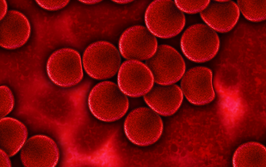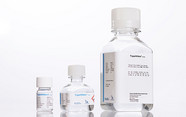Breaking Barriers: A New Approach for Targeted Drug Delivery to the Brain
A new approach to tackling the blood-brain barrier is attracting attention from big pharma.
| 5 min read | Interview

“When a vector-drug conjugate binds to the appropriate receptor on the blood-brain barrier surface, it is quickly internalized and enters the brain through receptor-mediated transport.”
Crossing the blood-brain barrier (BBB) remains one of the most formidable challenges in central nervous system (CNS) drug development. With more than 98 percent of potential therapeutic agents unable to penetrate this protective boundary, innovative delivery strategies are urgently needed to treat a range of neurological disorders. Vect-Horus, a biotechnology company based in France, is pioneering receptor-mediated transport to overcome this barrier and deliver a wide array of drugs, including peptides, antibodies, and oligonucleotides, directly into the brain.
Here, Jean Manuel Péan, Chief Scientific Officer at Vect-Horus, discusses the science behind their molecular vectors, the specific receptors they target, and how their approach compares to other BBB delivery strategies.
What are the primary challenges in delivering drugs across the BBB, and how do you address them?
The BBB prevents xenobiotics, including drugs, from entering the brain unless very high doses are administered with subsequent toxicity issues. Modern drug modalities bring new therapeutic options and hope, but these have a significantly higher molecular mass and degrees of complexity compared to small organic molecules, and dramatically lower cell permeability. It is generally recognized that only 0.1 percent of the injected dose of most therapeutic antibodies reach the brain after systemic administration. Largely as a result of this, half of all new modalities failed at the preclinical and clinical stage between 2019 and 2023, according to a Boston Consulting Group study.
Delivering drugs safely across the BBB and other biological barriers would allow them to exert a more potent therapeutic effect. Through specially designed molecular vectors conjugated to a drug to facilitate its delivery into the brain across the BBB, the aim is to make "undruggable" targets accessible by targeting specific receptors in the BBB that have high uptake and endocytosis rates.
There are several strategies that can be used to overcome this barrier. Our approach is to use receptor-mediated transport (RMT), which involves receptors transporting natural blood ligands, such as proteins, to the nervous tissue. When a vector-drug conjugate binds to the appropriate receptor on the BBB surface, it is quickly internalized and enters the brain through RMT.
There are many carriers and receptors that transport small molecules, such as amino acids and vitamins, across the BBB to the CNS. These carriers and receptors also facilitate the movement of larger molecules present in the blood, including proteins like insulin, transferrin, and low-density lipoprotein (LDL).
Our approach focuses on a number of receptors in the transferrin and LDL families, and we have developed a library of vectors that efficiently target these.
What specific receptors are targeted to enable the transport of therapeutic agents into the central nervous system?
We mainly leverage the transferrin receptor (TfR) and low-density lipoprotein receptor (LDLR) to facilitate the transport of therapeutic drugs and imaging agents to the CNS. Peptide vectors are used to target LDLR and heavy-chain antibodies (VHH) or nanobodies, which are derived from VHH camelid antibodies, to target TfR.
We now have the capability of transporting small molecules, peptides, oligonucleotides, such as antisense oligonucleotides and siRNAs, proteins, monoclonal antibodies and even viral and non-viral particles to the CNS and other tissues like cancers.
With which pharmaceutical companies are you working to achieve this?
Vect-Horus works with several pharma and biotech partners, who use our technology to transport drugs to the brain and other organs. We have more than a dozen R&D partnerships, including three disclosed licensing agreements with Novo Nordisk, Ionis Pharmaceuticals, and RadioMedix. Most of these collaborations are focused on the development of CNS therapies, including for neurodegenerative diseases and brain tumors.
How does your approach compare to other methods aimed at delivering therapeutics across the BBB?
There are several different strategies to deliver drugs across the BBB, and there are challenges associated with all these methods. One is the direct injection into the brain parenchyma and the therapeutic opening of the BBB, but this is invasive with the usual associated risk of infection, recovery time, and cost implications. Other methods include alternative routes of administration, like nose-to-brain, and the chemical modification of the drugs (prodrugs). These approaches have so far failed to demonstrate efficacy. As such, the evidence to date shows that the RMT approach could be a very effective and safe way to bypass the BBB.
What preclinical or clinical data have you generated?
We have demonstrated proof of concept of our TfR vectors in rodents and non-human primates. This research has confirmed these TfR vectors do not induce an immunogenic effect in vitro and are safe in animals when injected at therapeutic doses.
With the LDLR vectors, we have shown efficacy in animals implanted with cancers – specifically glioblastoma and pancreatic cancer. One of these vectors is used as a theragnostic agent in collaboration with RadioMedix, and is currently in phase I clinical development for the diagnosis of glioblastoma.
What future developments or improvements are being considered to enhance drug delivery capabilities?
BBB drug delivery has been and is still the limiting factor in the future development of new therapeutics for the brain. There are several technologies being developed to enhance the brain uptake of therapeutics, such as ultrasounds and nanoparticles, but RMT remains the most effective and safest way to bypass the BBB. Large pharma companies such as Roche/Genentech, Abbvie, and Eli Lilly have already integrated this approach for the development of their CNS drugs, and several vectorized drugs are in clinical trials. This first generation of vectors will most likely be optimized from here to improve the specificity and the efficiency of the targeting. Also, current research on drug targeting focuses not only on targeting an organ, but on achieving functional targeted delivery in a specific population of cells to be treated within the organ, for instance the neurons or the astrocytes or the glial cells within the brain.



















